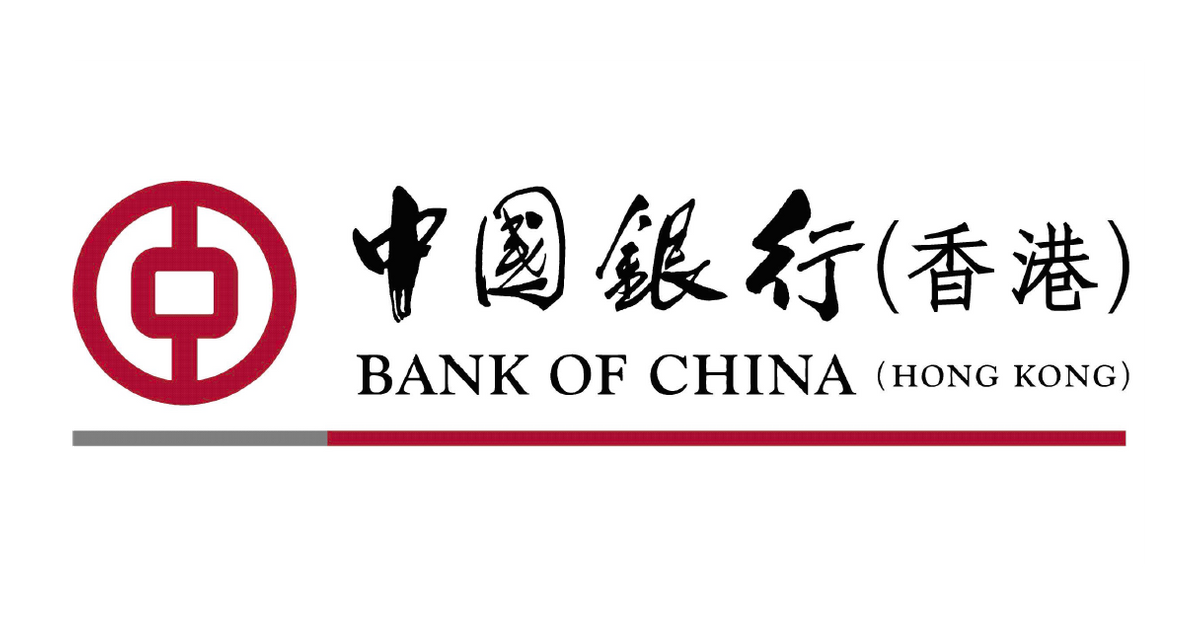What Is Digital PR and How Does It Work?
Digital PR sits at the intersection of traditional public relations and modern digital marketing — here’s how it works and why your brand needs it.

Digital public relations exists thanks to the dot-com boom and today’s widespread use of social media. Thanks, Internet!
Before we dive in (or get lost in a World Wide Web — or better yet, Web3 — spiral), let’s start with the simple answer to the question that brought us all here. What is Digital PR? The professional maintenance of a brand’s online image.
The longer answer includes a combination of traditional media relations with digital marketing tactics like search engine optimization, social media and content marketing to boost brand trust and awareness. The rest of the details are waiting for you below.
Digital PR vs. Traditional PR: What’s the Difference?Why Do You Need Digital PR?10 Types of Digital PRHow to Use PR, Content, SEO and Social Media TogetherDigital PR Campaign Strategy Best PracticesDigital PR Tools for Measurement, Promotion and AmplificationDigital PR vs. Traditional PR: What’s the Difference?
Public relations is all about maintaining a favorable public image for a company, brand or person. Though they’re both rooted in boosting and maintaining awareness, digital PR and traditional PR have different styles.
Essentially, one is offline and the other is online. The ultimate win for old-school PR is a front-page headline, whereas digital PR points toward page 1 search results.
Traditional methods utilize the OG channels of communication to build awareness and maintain relevance. This includes:
Printed publications, such as newspapers and magazines.Radio mentions.Television coverage.Events, such as trade shows and release parties.Investor and community relations.Digital PR, on the other hand, focuses on online presence to enhance visibility and secure virtual introductions to potential customers. Tactics include:
Search engine optimization.Websites and blogs.Online editorial and media coverage.Backlinks and digital mentions.Influencer marketing.Social media engagement.Videos and podcasts.Online content is often the focus for today’s publicists, though many still find value in networking with journalists to get featured in print publications. Some will use traditional channels in tandem with digital methods to build awareness through various touchpoints.
Ultimately, the power of either digital PR or traditional PR will come down to where your target audience is most likely to be.
Why Do You Need Digital PR?
In an increasingly digital-first world, companies need a top-notch online presence to stand a chance against their competitors.
Building a favorable digital presence is about more than looking good, it’s also about making it easy for potential customers to find and engage with your brand online. This is where your digital public relations strategy will shine.
Digital PR is a cost-effective way to increase website traffic, improve search ranking and produce higher conversion rates. Here’s how:
Increase website traffic: Tactics like online editorial coverage, third-party mentions and influencer marketing lead more visitors to your website.Improve search ranking: Optimizing digital content and securing backlinks from high authority sites boost online visibility.Produce higher conversion rates: With more eyes on your brand and external mentions that build trust, you’ll generate leads that are likely to become your next customers.On your way to achieving these digital PR goals, your brand will benefit from a flourishing digital footprint. This includes a great website, active social media accounts, earned media, increased exposure across online media outlets, and proof that your brand is a top choice in your industry.
Increases in online exposure will boost your image and build consumer trust. As a result, your audience will be more likely to hear about you and follow a seamless path to conversion.
10 Types of Digital PR
With so many online channels to utilize, there are several public relations techniques that a digital marketing strategy can include. A strong digital PR strategy will encompass the tactics that are most connected to the business goals.
Some common types of digital PR include:
1. Press Release
Starting with the most classic public relations tool, a press release is a newsworthy announcement that promotes publicity and online editorial coverage.
Scenarios that warrant sending out a press release include:
Launching a new product, service, or initiative.Hiring a thought leader or influential professional.Announcing a new partnership or collaboration.Remember to grab attention with a compelling headline, then include all of the details that a journalist or blogger would need to cover the story — such as links, images and videos that further add to your online exposure.
2. Media Mentions
In addition to press releases and news coverage, your brand can secure a spot in the limelight through other types of media mentions. This often includes interviews to share your expert opinions and insight on trends, news, developments or predictions within your industry.
3. Backlinks
A backlink is when another website links copy or visuals to your website. You’ll see them in articles to attribute content to another source, direct viewers to a destination with more information, or provide users with a clear next step after engaging with the content on the page.
Whenever you secure online mentions, you’ll want the external source to guide users directly to your website through backlinks.
Link building is an important element of digital PR because it creates more opportunities for people to end up on your website. Plus, high-quality backlinks from reputable sites, online publications and reviews help boost your ranking in Google’s eyes.
4. Inclusions and Attributions
A brand mention comes in many forms, including:
Adding your company website to a directory or resource list. Including your company in a listicle of recommendations.Finding unlinked mentions of your company that include your name without a backlink.Implementing affiliate and referral programs.Appearing in videos, podcasts or social media posts.While some brand mentions happen organically, you can also flex your networking skills to ensure external websites, apps and creators consider including your brand in their content.
5. Guest Posts
Take your content creation a step further by writing blogs and articles for other websites. Publishing guest posts creates brand awareness that builds social proof, establishes thought leadership and secures high-quality backlinks.
This exposure reaps the best results when you focus on trustworthy, well-known and relevant destinations where your target audience is likely to engage.
Don’t have the time or in-house writing talent to support this tactic? Consider outsourcing to an agency or sponsoring external content that someone else created.
6. Social Media
Your digital presence extends to your social media accounts, making them another tool in the digital PR toolbox.
In addition to the usual benefits of these digital marketing channels, social media platforms are part of a strong communications strategy. Brands can use social media to respond during times of crisis, address both positive and negative publicity, or contribute to bigger conversations.
Social media mentions from loyal customers, staff members and partners can also build trust and awareness with more people. In the same vein, cross-promotion provides mutual benefits that are always worthwhile.
7. Influencer Marketing
Social media is also a great place to connect with influencers and reach a wider audience through their engaged networks. Their endorsement can quickly turn their audience into viable leads for your company, as well as build brand trust.
Be sure to do your research before you dive into influencer marketing. This tactic isn’t akin to empty celebrity endorsements. Instead, you’ll want to be intentional about working with creators who are related to your industry and have audiences that mimic your brand personas.
8. Audio and Video
Much like old-school radio mentions, guest appearances on popular podcasts and online videos related to your industry are effective digital PR tools. Not only can you flaunt your expertise and the benefits you offer customers, but you can also show off your brand personality in these casual settings.
9. Online Content
Keeping up with your content marketing strategy will always be beneficial for your online presence.
Blogs, white papers, eBooks, webinars, guidebooks, animated videos — you name it. As long as your online content is relevant and helpful for your target audience, it will build trust and authority. Optimizing this content will also improve your search rankings and help you achieve the Page 1 result that digital PR is all about.
10. Networking and Relationship Building
Successful digital PR strategies rely on strong networks of journalists, editors, bloggers, influencers, digital creators, content marketers and industry partners. Be sure to spend time building these relationships so you have people in your corner who will spread the word about your products and services.
How to Use PR, Content, SEO and Social Media Together
Yes, it’s finally time to address the elephant in the room: Digital PR is deeply intertwined with SEO, social media and content marketing. What can we say? They’re stronger together.
Digital public relations utilizes elements of content marketing, SEO and social media to consistently share positive brand messaging with target audiences. Whereas digital marketing generally promotes a recognizable brand voice, digital PR amplifies external perspectives that form the social proof and credibility behind a brand.
It starts with creating content, such as blog posts, landings pages and press releases. Using SEO principles, the content is optimized to improve search rankings. This is your owned media.
From there, your owned media is promoted through digital marketing channels like social media. Public relations comes into the fold to push this amplification step to the next level, securing earned media mentions and customer experience stories that contain backlinks to your original, owned media content.
While content marketing and SEO typically promote on-site content, public relations takes the lead on the third-party side of things to attract more eyes to your brand. This difference matters because it allows marketing and PR to be in a mutually beneficial relationship.
When an unbiased news site, industry thought leader or trusted influencer talks about your brand, people are more likely to trust it. In turn, they’re more likely to wind up on your website and browse your content with a favorable mindset.
And so, the cycle continues.
Digital PR Campaign Strategy Best Practices
The usual marketing suspects will also ground your digital PR campaigns: clear goals and target audience. Once you have those in place, you can keep these specific best practices in mind when you put your digital-public-relations hat on.
High-Quality Over Low-Quality
As we discussed above, link building plays a prominent role in digital PR. When it comes to increasing your backlinks, quantity won’t win the race.
Always aim for a small number of high-quality backlinks on reputable sites. It’s better from an SEO perspective, but it will also be more effective in building trust and credibility.
If you don’t know where to start, consider the reverse engineering method. Take a look at the backlink profiles of your competitors to identify patterns in referring domains. Those websites can then become some of the first places you can go to secure your own backlinks.
Targeted Clicks
When you’re in link-building mode, consider the details in the clicks you’re hoping to get from potential customers. Tactics like target anchor text — hyperlinking a specific word or phrase at the moment rather than waiting for a “click here” — can help boost engagement with your backlinks.
You can also be choosy about where those backlinks go. Spoiler: It doesn’t always have to be your homepage! You can create target URLs specific to your digital PR campaign in order to funnel traffic to the most ideal destination.
Pitch Perfect
If your pitch doesn’t land, your digital PR campaign will be in trouble. So when you’re reaching out to journalists, influencers or others in your network to secure brand mentions, make sure your message is undeniably compelling.
Here are some top tips to perfect your pitch:
Make it mutual: Be clear about how the other person will benefit from sharing your story or promoting your brand online.Be personal: Do your homework and tailor your message to the recipient.Stand out: Craft subject lines, headlines and content that grabs their attention and makes it hard to say no.Define next steps: Don’t leave the recipient hanging without a clear call to action.Make it easy: If you can handle a lot of the heavy lifting, your offer is more likely to be one they can’t refuse.Build Your Media List
A media list is a living document with information about journalists, bloggers, writers, editors, influencers and content creators that cover certain topics. PR professionals will reference this list when they have a pitch to share.
In your case, you’ll want to build a media list that features the names, titles, emails, publications and relevant links of creators relevant to your industry, niche or area of expertise. To figure out who should make the list, consider factors like recent work, site credibility and authority.
Once you have a media list, the real secret sauce hits when you start creating and maintaining relationships with the identified individuals, publications and organizations.
In an ideal world, you will initiate conversations weeks before you plan to ask for a media mention. This allows you to build a reliable network, rather than always turning to cold outreach when you need digital mentions.
Lead With Data
If you have compelling data on your hands, use it in your digital PR campaign. Whether it’s part of your angle that elevates your pitch above the rest or you create an entire campaign based on data, unique data has a strong chance of earning emphatic promotion.
When you’re unable to provide original data, you can still utilize this tactic. Instead, provide the context or expert interpretation that creates a new and meaningful story from the existing data.
Always Be Monitoring
Monitoring is the behind-the-scenes work that keeps a digital PR campaign going strong. This process allows you to keep an eye on elements like:
Relevant news stories.Trending industry conversations.Unlinked mentions.Social media mentions.Competitor mentions.Misspellings or inaccurate information.This finger on the pulse is especially important to ensure your timing is always right.
Before you get too deep into your digital PR campaign, be sure to arm yourself with some of the go-to tools for measuring, promoting and amplifying your online presence.
Here are the tools that digital PR specialists are using to support their strategies and campaigns:
Google Analytics: Head here to measure your website traffic and conversions. This includes helpful breakdowns of where your traffic comes from, such as referrals, organic search or social media.Google News: This news aggregator service makes it easier to find company and product news based on audience search intent and interests.Google Alerts: Google will monitor the web for new content based on keywords of your choice, such as your brand name and industry phrases. You’ll receive a list of links in your inbox at your specified frequency.Google Search Console: Monitor clicks, impressions, position rankings and brand name searches.Ahrefs: This paid tool offers a dashboard of your SEO metrics, including health score, domain rating and referrals. Other features include a Site Explorer to research competitor backlinks and keyword rankings.Moz Pro: Another paid option that offers tools like keyword research, rank tracking, site crawl, content optimization and link research.BuzzSumo: Brands use this tool to track social media shares, generate high-performing content ideas and identify influencers.Upfluence: A one-stop influencer manager solution that will help you find, contact and collaborate with influencers.HARO: Help a Reporter Out (HARO) connects journalists to sources with the expertise they need to complete upcoming stories. Head here to list contacts from your company as trustworthy sources and score your next media mention.Tineye: Use this reverse image search tool to identify where your logo, images and graphics appear online.Next up: what are you measuring with these tools? If these metrics are increasing, it’s a sign your campaign is working:
Website traffic (including direct, organic and referral)Number of media placements ClicksImpressionsPosition rankingsSocial media engagement (especially shares and followers)Brand name searches Brand sentimentDomain authority/rating (AKA the strength of your website’s backlink profile)Leads that came through your websiteConversions and salesOne final consideration: Depending on your needs and goals, a digital agency could also be a catch-all tool. The most effective measurement, promotion, amplification and monitoring takes dedicated time and energy, which is why many companies will outsource digital PR to an agency. Along with increased capacity and expertise, access to an established network is another benefit of hiring a PR agency.
Your Digital Presence is Winning
Looking for more ways to build or boost your brand’s online identity? Consider adding The Content Marketer to your inbox for weekly insights, advice and opinions about all things digital marketing.

 Aliver
Aliver 
































